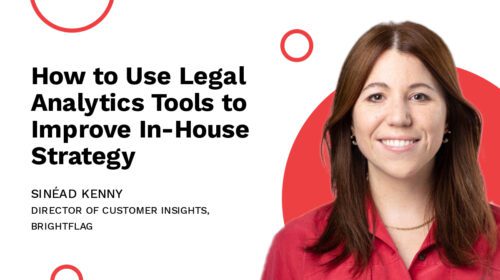4 Legal Department Financial Planning Best Practices
The bulk of the work involved in laying out an effective financial strategy for the legal department takes place during the annual budget planning period. When legal isn’t closely involved in the annual planning process—advocating for the resources they need and providing finance with key insights into upcoming spend—they oftentimes end up under-equipped to handle the workloads they’ll be facing in the year ahead.
Here we’ll share a few legal department budget planning best practices to help your in-house legal team position themselves in the driver’s seat during annual financial planning. By following these tips, your legal team can ensure they’ll have the investment they need for the upcoming fiscal year, and better position themselves as financially fluent business leaders within the organization.
1. Understand the Annual Planning Calendar
Understanding your organization’s annual planning calendar and the key deadlines by which legal needs to submit information to finance and other key stakeholders is essential to a successful financial planning process.
For most companies, annual planning begins in earnest during Q3—which means it will kick off sometime between July and September if your company’s fiscal year matches the calendar year. However, it’s important to note that the larger and more complex your organization is, the earlier the annual planning process will typically begin.
If you’re unsure of the exact dates, simply ask your financial planning and analysis (FP&A) partner for an overview of the calendar and key deadlines. They’ll be happy you asked.
In larger organizations, legal will have a dedicated FP&A partner, whereas in smaller companies, this role may be taken by legal’s single finance partner or a director of finance.
2. Make Budgeting a Team Sport
Though legal ops and the General Counsel should have a basic understanding of key financial terminology, nobody is expecting them to transform into professional financial analysts come legal department budget planning season.
This is where your FP&A partner comes into play. Don’t hesitate to reach out to them with questions about budgeting if there are things you don’t understand. Conversely, take the time to educate them on the finer details of how legal spend works so they can give you more informed budgeting advice.
By opening up these lanes of communication, you can solidify the mutually beneficial relationship between legal and finance, and make the planning process significantly easier. Developing a partnership with FP&A also has the added benefit of establishing a champion for legal within finance who can better advocate for the in-house team’s needs during finance-only meetings.
It’s important to note here that FP&A is not the only partner you’ll need during the annual budget planning process. Everyone in the legal department should be contributing. In particular, your practice area leads should leverage their proximity to the business and their own legal spend to provide the team with good intel on how spend will change in the coming year. And legal team members at all levels should educate themselves on the financial plan, and of their role in ensuring that it’s adhered to.
3. Make a Compelling Case for the Resources You Need
Annual budget planning season is the single best time to advocate for the additional resources your legal team needs to manage their growing workloads. That’s because it’s the one time all year when you’ll have the opportunity to carve out a dedicated budget for those resources. If you wait until budgets have already been set to petition for a new legal tech tool or additional headcount, it becomes an uphill battle, because the funds will have to be reallocated from another area of the department or business.
As a result, it’s vital that you make a strong case for the additional resources you need during the annual planning process. Demonstrate how the new legal tool, flex resource, and/or additional staff you’re looking to add can save the organization money in the long run. This is the time to tell a clear and compelling story as to how these resources will result in overall savings.
Pro Tip: In-house professionals often cite e-billing as the perfect legal tech tool to advocate for during annual planning discussions. That’s because it’s fast and easy to implement, requires less investment than more expansive tools like CLM solutions, and can secure a quick yet sizable return on investment—which makes advocating for additional legal tech resources much easier next time around.
4. Get Complete Visibility into Your Legal Spend
Understanding your current legal spend and the factors that are shaping it is foundational to predicting what your department’s spend will look like in the future. However, getting those granular insights into matter-level data is painstaking if you don’t have a modern e-billing solution in your toolkit.
If you have a platform like Brightflag implemented already, you can easily pull reports on current resourcing, identify trends in how your legal spend has changed over the past year, and use those data-driven insights to determine the best way of allocating resources in the future. For example, you may notice that spend with one of your outside counsel firms has risen dramatically over the past year as they’ve taken on more work. This could present an opportunity to negotiate a volume discount with that firm, in turn freeing up additional resources that can be reallocated to another area of need within the department next fiscal year.
Those without an e-billing solution in place will have a much harder time getting the spend insights they need to develop a pinpoint budget. However, this very fact can be leveraged to create a line item for an e-billing tool for the upcoming year. After all, as we mentioned earlier, annual planning season is perfect time to advocate for additional resources. And the insights that a tool like Brightflag provides can completely transform your team’s ability to effectively navigate the financial planning process next time around.
Start Creating Your Legal Budget
When instituted correctly, these best practices should effectively position your in-house legal team to take charge of annual budget planning. However, that’s just the first step in the annual planning journey: Now it’s time to actually craft your budget for the upcoming fiscal year.
To learn how Brightflag can help make the budgeting process easier, book a demo with us today.



